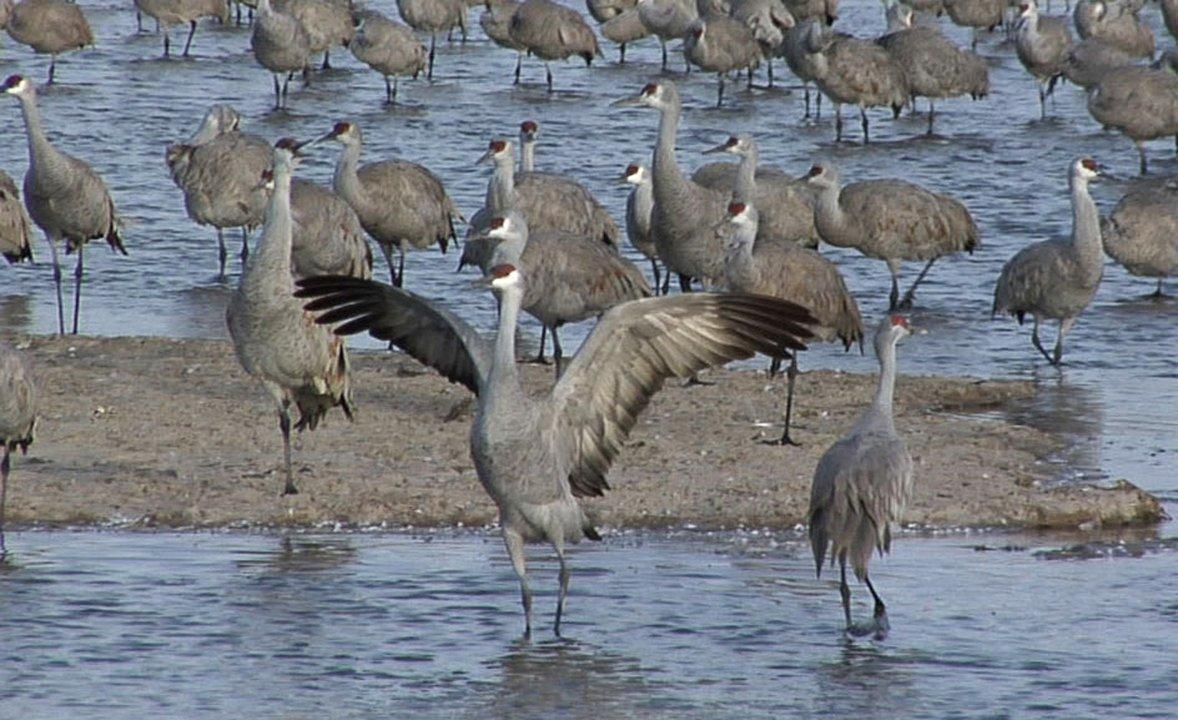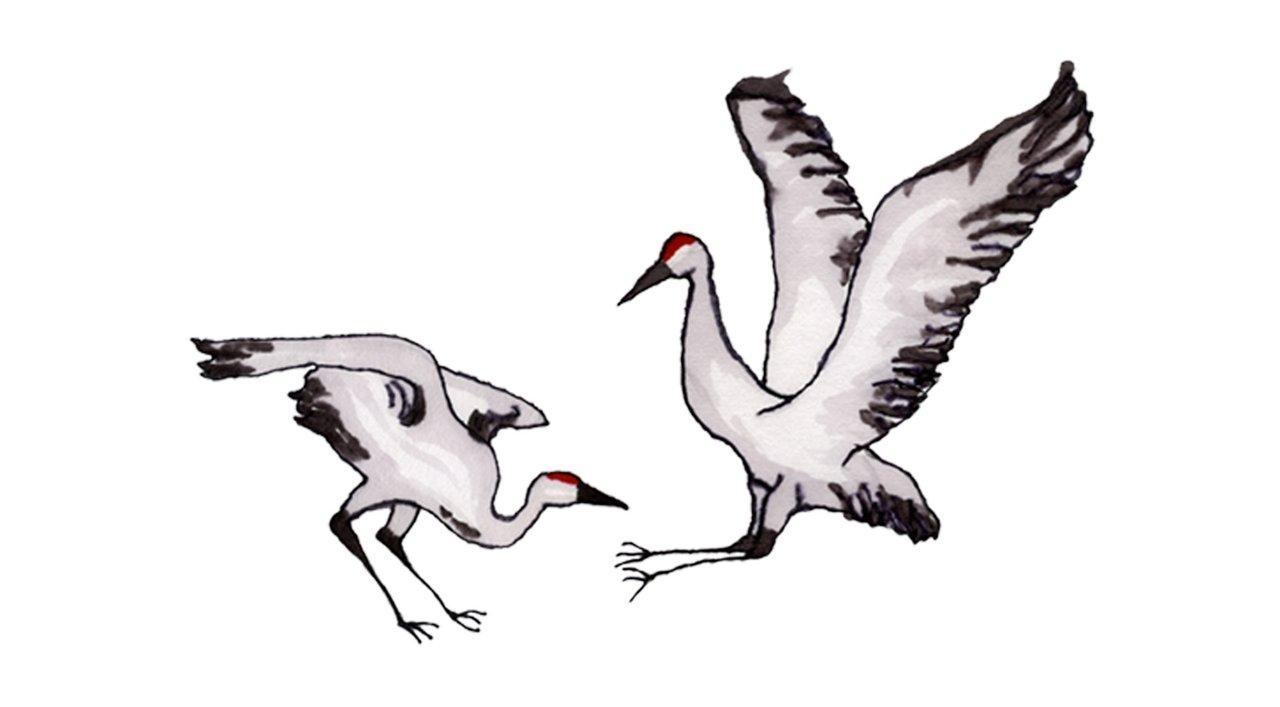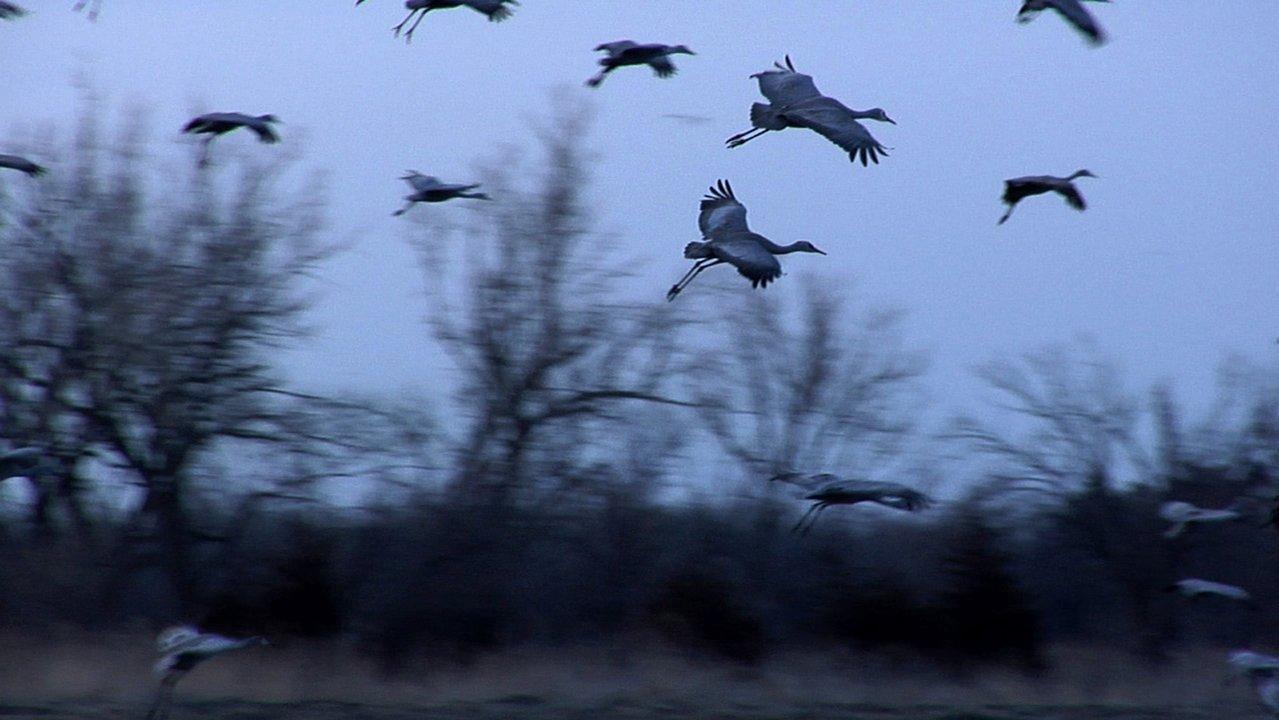Mating for Life
First Aired Thursday, January 10, 2013
This intimate documentary, pilgrimage to witness the annual migration of sandhill cranes.
In this intimate documentary, the filmmaker makes a pilgrimage to the central United States where the annual spring migration of the sandhill cranes occurs along the Platte River. As this journey unfolds, the author compares the crane migration to her own transformation as she turns forty. The film interweaves facts about this most elegant of birds with existential questions that tend to resonate around the midpoint of our lives. The sandhill crane is a bird species known to mate for life. It is one of the oldest living birds, surviving and adapting for over nine million years. With this kind of staying power, the author wonders if the cranes might have some things to teach us about our ability, or inability, as is the case may be, to find a lifelong mate. She enters various bird blinds along her route to the Platte River and begins to contemplate what other sources of meaning might exist for those of us who do not mate for life, or have families in the traditional sense.
“The most obvious similarity between cranes and human beings and the one I think many of us can relate to, is the fact that cranes mate for life. It is a romantic idea to us, because we have all been taught that human beings also mate for life. And yet I look around me and I see many people who do not. In the film, I use myself as an example of someone who has not mated for life. What does this mean? I wonder at the implications of the fact that fewer and fewer of us seem to be finding a lifelong mate. This is sort of the jumping off point for the film.”MATING FOR LIFE features spectacular footage of the ancient sandhill cranes, shot from the bird blinds on the river and the surrounding areas alongside the Platte River. This non-traditional nature film takes the viewer on a journey of self knowledge while at the same time featuring layers of information about sandhill crane biology, behaviors and habitat.

Cindy Stillwell

Cindy Stillwell

Cindy Stillwell
Film Credits:
The film’s author is award winning producer and director, Cindy Stillwell. Her films have screened at venues worldwide, including the Museum of Modern Art in New York, Sundance Film Festival, and the International Film Festival of Rotterdam. She currently lives in Bozeman, Montana, where she teaches film production and mentors graduate students in the School of Film and Photography at Montana State University.